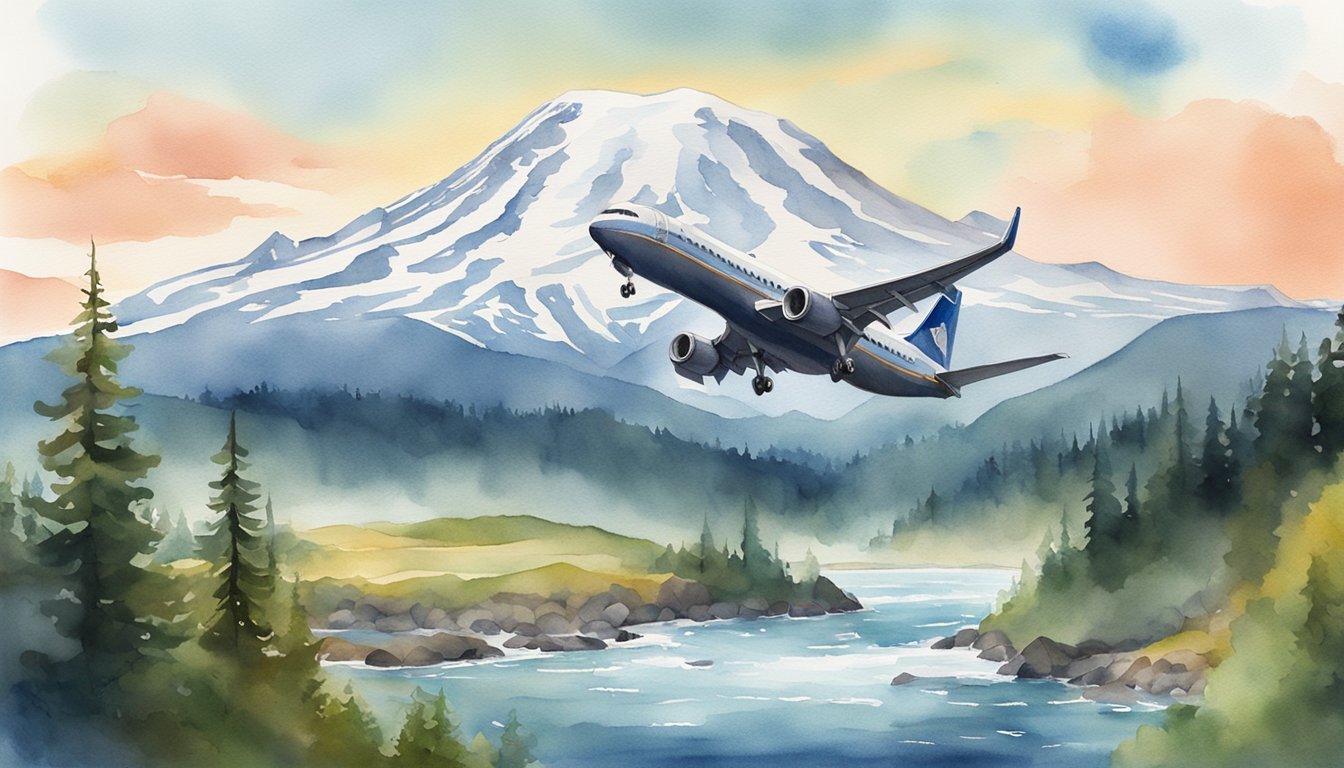Geography and Natural Features
Mount Rainier and Volcanoes
Washington State, located in the Pacific Northwest region of the United States, is home to several stunning mountains and volcanoes. Among the most iconic is Mount Rainier, the highest peak in the state at 14,411 feet, and an active stratovolcano. The Cascade Range stretches across the state and includes several other well-known volcanoes such as Mount St. Helens, which famously erupted in 1980.
Columbia River and Waterways
The Columbia River is one of the most important waterways in Washington, forming part of the border with Oregon and providing essential resources and transportation routes. In addition to the Columbia River, the state also boasts numerous lakes and rivers, such as the Spokane River, which runs through the city of Spokane. Additionally, the Puget Sound is a complex estuarine system in the northwest of the state, connecting with the Pacific Ocean and providing a vital shipping route and home to various marine life.
Flora and Fauna
Washington’s diverse geography, from coastal regions to rugged mountain terrain, supports a wide variety of plant and animal life. The state’s nickname, the Evergreen State, comes from the abundance of evergreen forests, featuring species like Western Hemlock and Douglas fir.
In the Olympic National Park, located on the Olympic Peninsula, visitors can find temperate rainforests and the Olympic Mountains, providing habitats for various species. Animals like sharp-tailed snakes, pygmy short-horned lizards, and numerous bird species are well-adapted to Washington’s unique environments. The state’s diverse flora, which include wooly sunflowers, tiger lilies, and coast rhododendrons (the state flower), add to its natural beauty.
History, Culture, and Economy

Founding and Statehood
Washington, also known as the Evergreen State, officially became the 42nd state in the United States on November 11, 1889. It was named after George Washington, the first President of America. The state is located in the Pacific Northwest region and shares borders with Canada, Oregon, and Idaho.
Cultural Contributions
The legacy of Washington has a unique cultural mix, with significant contributions from Native American, Asian, and Scandinavian communities. Seattle, the largest city in the state, is a diverse melting pot, known for its thriving arts, music, and cuisine scenes. Washington has produced notable figures like Bill Gates, Jimi Hendrix, and Bing Crosby.
Not just limited to the arts and technology, Washington is also home to global companies like Microsoft, Amazon, Starbucks, and Boeing, which have significantly contributed to its economy.
Industrial and Agricultural Achievements
Washington’s agricultural sector is widely diverse, excelling in the production of apples, sweet cherries, pears, and red raspberries. It is also the leading producer of hops in the United States.
Some achievements in the state include the construction of the Grand Coulee Dam, one of the world’s largest concrete structures, and the development of the longest floating bridge, the Everett Floating Bridge which connects Seattle to suburbs in the east.
- State Symbols
- State Flower: Rhododendron
- State Tree: Western Hemlock
- State Bird: Willow Goldfinch
Washington’s economy ranks eighth among U.S. states, with a heavy focus on agriculture, technology, and aerospace industries. The state has a rich history of innovation and entrepreneurship, and this spirit is still evident today through the numerous successful businesses founded and headquartered in the region.
With its captivating natural beauty, deeply-rooted cultural history, and flourishing economy, Washington State continues to contribute to the overall progress and diversity of the United States. Home to breathtaking national parks, innovative technology hubs, and a thriving agricultural sector, Washington State plays a vital role in the nation’s growth. While exploring various states and their unique contributions, one might also find it interesting to learn facts about New Jersey, another state rich in history and economic significance. Both states showcase the diversity and strength that define the United States as a whole.

